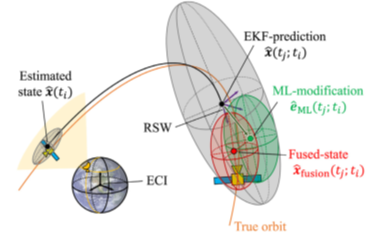
Invention Summary:
Efficient, high precision orbit prediction is increasingly crucial for improved Space Situational Awareness (SSA), especially as the number of man-made objects in earth orbits continues to grow rapidly. Current orbit predictions that are solely grounded on physics-based models are not effective and robust enough to achieve the required accuracy.
Scientists at Rutgers have designed a new strategy that fuses the newly developed machine learning (ML) approach with the classical orbit prediction using Extended Kalman Filters (EKF). This strategy defines the pseudo-physical meaning of the machine learning output first, and then an analytical model is developed to include the machine learning results in the framework of the classical EKF. Furthermore, they have designed a monitoring system that can track the performance of the machine learning models and retrain the models to significantly improve the performance of the predictions.
Advantages:
- Improved accuracy and reduced uncertainty of space orbit predictions vs. traditional Extended Kalman filter or machine-learning models.
- Improved performance over time by monitored re-training of machine learning models.
- The fusion strategy can be adapted to merge the information from machine-learning models and alternatives of Extended Kalman filters.
Market Applications:
Space Object tracking and collision avoidance.
Intellectual Property & Development Status: Patent pending. Available for licensing and/or research collaboration.
Publication: Fusion of a machine learning approach and classical orbit predictions, Acta Astronautica, Volume 184, July 2021